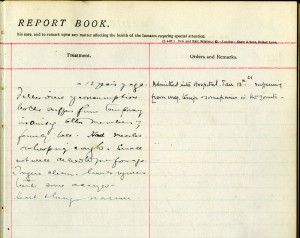One part of the ‘Unexplored Riches in Medical History’ project is to catalogue the records of The Children’s Society’s children’s homes.
In 1882, The Children’s Society (then known as the Waifs and Strays Society) opened its first two homes; a home for girls in Dulwich, London, and a home for boys in Clapton, London. From that point onwards, the number of children’s homes continued to grow until The Children’s Society was running a whole network of children’s homes in England and Wales.
The Children’s Society continued to operate children’s homes until the late-20th century, at which point it evolved away from residential child care to start working with children and young people in new and more innovative ways.
Now that The Children’s Society’s homes have closed down, their memory survives in the documents and records that they left behind. These records were created during the day-to-day work of the homes and so can shed light on all aspects of the way the homes were run, from anything as varied as the layout of the buildings to what the children ate each day.
Amongst the records of the children’s homes are many items that can be used to study medical history and childhood diseases. For example, the image below shows a page, written c1896-1901, from the medical register kept at St Oswald’s Home For Girls, Cullercoats, Whitley Bay, Newcastle upon Tyne, Northumberland.
In this register, an entry was made for each child in the home in the 1890s, detailing their medical history. The above entry states:
[The child] – 12 years of age.
Father died of consumption
brother suffers from temporary
insanity. Other members of
family well. Had measles
& whooping cough. Small
not well developed for age.
Tongue clean. bowels regular.
teeth some decayed.
Heart & lungs normal.
Admitted into Hospital. Jan 13th. 01 suffering
from irreg. temp & some pains in the joints.
One of the aims of the ‘Unexplored Riches in Medical History’ project is to catalogue the records from The Children’s Society’s children’s homes, including medical records like the one above. The catalogue will list exactly what records we have for each home, which will make it much easier to use the collection to research medical history as well as a large number of other topics.

